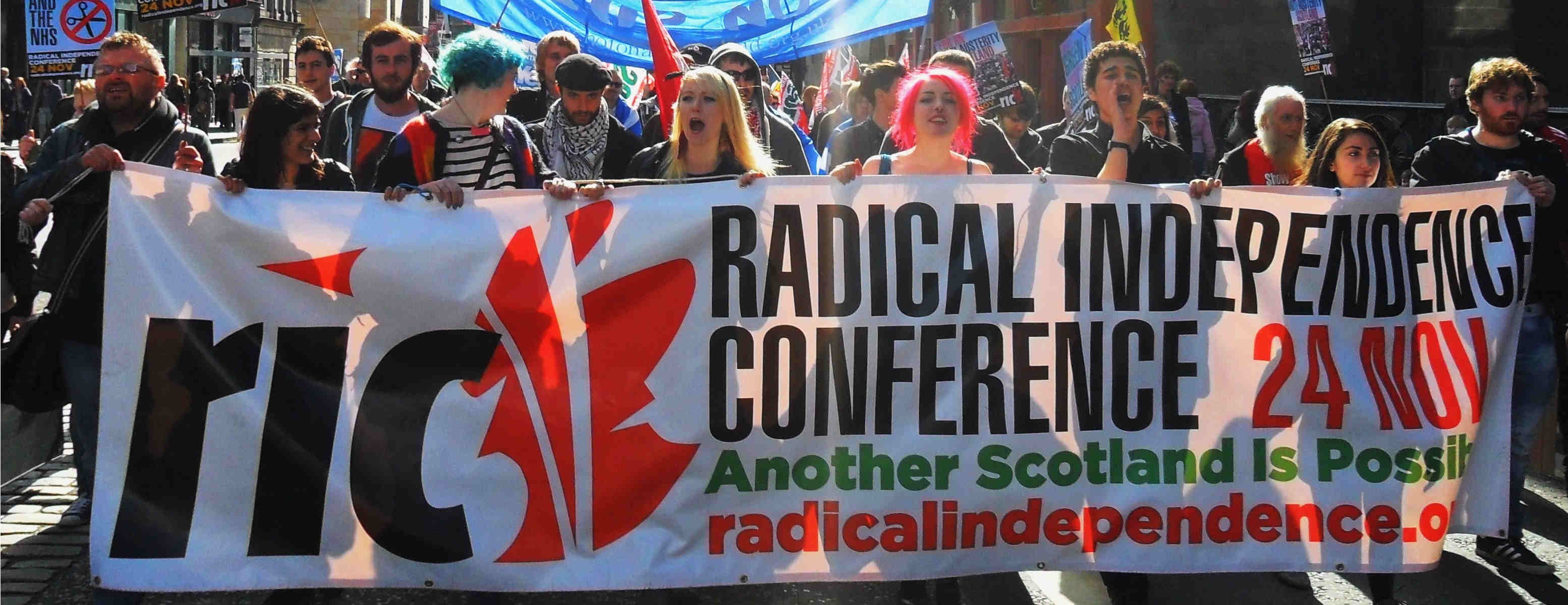The debate surrounding the upcoming independence referendum has reinvigorated the left in Scotland, writes David Jamieson.
The Scottish left is experiencing its highest and most positive public profile since the acrimonious split in the Scottish Socialist Party (SSP) of 2006.
This relative celebrity is all the more remarkable given the continuing divisions wrought by the SSP crisis, which has seen its successor parties only gain a minuscule fraction of the 6.5% of the national poll it received at its high water mark in the 2003 Scottish Parliament elections.
This return to importance for the Left is in large part due to its prominent role in the national debate which is occurring in the lead up to the September 2014 vote on Scottish Independence.
Besides the inclusion of Colin Fox (SSP Co-convenor) on the Yes Scotland advisory board and the sharing of the official campaign between the SSP, Greens and the governing Scottish Nationalist Party, the left has its own Radical Independence Campaign (RIC), with a national presence and a recognised brand.
The official ‘Yes’ campaign has been driven in a progressive direction by the influence of the Left, the efforts of lobbying by the Scottish Trade Union Congress but most importantly the working class constituency already for independence. Polling data has repeatedly shown that a majority of Scotland’s younger and poorer citizens are more likely to vote Yes.
The first Radical Independence Conference, held in November 2012 attracted around 1000 attendees and was assessed by the writer Gerry Hassan, one of Scotland’s leading public intellectuals, as “the biggest political gathering in Scotland since the Scottish Parliament was set up”. Even a hostile commentator accepted that “the emergence of RIC suggests that there is a space in Scotland for a Red-Green Republican Left” representing “10 or maybe 15% of the popular vote”.
It is largely the action of this campaign – specifically the hounding of an insurgent UK Independence leader Nigel Farage out of Edinburgh in May 2013 – that has brought flamboyant Dundonian and Respect Party leader George Galloway tumbling rather haphazardly into the national debate. Galloway has long been an opponent of the independence cause, but he had scarcely glanced north of the border since a bruising electoral defeat in 2011 when he failed to secure a seat in the Scottish Parliament.
The views Galloway expresses in his ‘Just Say Naw’ campaign, that the independence movement contains a dangerous nationalist sentiment that threatens ethnic and religious minorities, is only the most extreme version of what was once the mainstay of left opinion. A minority on the socialist left, mostly in or tightly clustered around the Scottish Labour Party, still maintain that the referendum is at best a distraction from the real issues of class conflict or at worst a threat to the cohesion of the British labour movement.
At the forefront of the two warring perspectives on independence is a debate about strategy. For the ‘No’ side maintaining the union is step one of a master plan that involves the recapture of the Labour party for the unions and the left, the capture of the Westminster parliament for Labour and the capture of the neo-liberal economy for a post-war style Keynesianism.
For the ‘Yes’ side the strategy is one of dislocation from the UK and everything it represents. The break with the UK providing the possibility of a rupture with neo-liberalism, an end to Scottish collusion in the ‘New American Century’ and the end of Westminster style governance. This rupture would inevitably occur both north and south of the border, as the present British establishment would be disturbed beyond simple repair.
In short, forward or back. Forward to the end of the old settlement of powers and relationships, or backwards to a post- war golden age when, all faults aside, many believe the UK working class was at least on ‘the right track’.
As of yet the pro-Union left have yet to make a distinctive mark on the debate and the honourable content of their politics has been obscured by association with the most reactionary elements of Scottish and British society. This is a situation they vigorously protest against. Jackson Cullinane, the current Chair of Scottish Labour recently spoke out about the party being “bounced” into the official ‘Better Together’ campaign, without extensive and democratic consultation of a membership rightly irksome of coalition with the Tories.
This state of affairs, the heavy weighting of the left in favour of independence, makes a distant yesteryear of Scotland’s first Devolution Referendum of 1979. In the debate surrounding this doomed referendum the bulk of the Scottish left supported the traditional ‘Home Rule’ position which had a vintage as old as early 20th century Scottish labour pioneers such as Keir Hardie. The group of activists: trade unionists, academics, politicians comprising the Red Paper Collective claim the legacy of that tradition and are the most articulate amongst the left supporters of the Union.
The debate leading up the independence referendum, is likely to not only decide whether the UK has a future but also the political direction of the Scottish left and working class.





